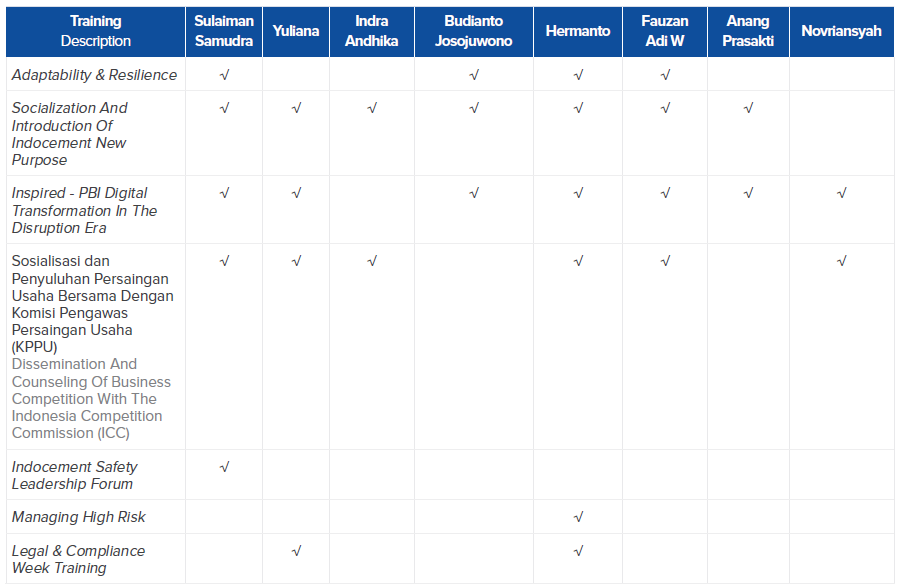- About Us
- Our Business
- Investors
- Governance
- Responsibility
- Careers
- News & Event
- Contact Us
Governance
Internal Audit is an activity providing assurance and independent and objective consultation with the purpose to increase value and to improve the Company’s operations through a systematic approach by evaluating and improving the effectiveness of risk management, internal control, and corporate governance process in the Company.
Legal Basis
Internal Audit Charter
Indocement’s Internal Audit Charter was updated and established on May 10, 2016 Indocement’s Internal Audit Charter, among others, regulates:
Party Appointing and Dismissing The Internal Audit Unit Head
The Internal Audit Division is part of the Company’s organizational structure which is directly under the President Director. The Internal Audit Division Manager is appointed and dismissed based on the Board of Directors’ decision, which shall be approved by the Board of Commissioners.
Internal Audit Position in the Organization
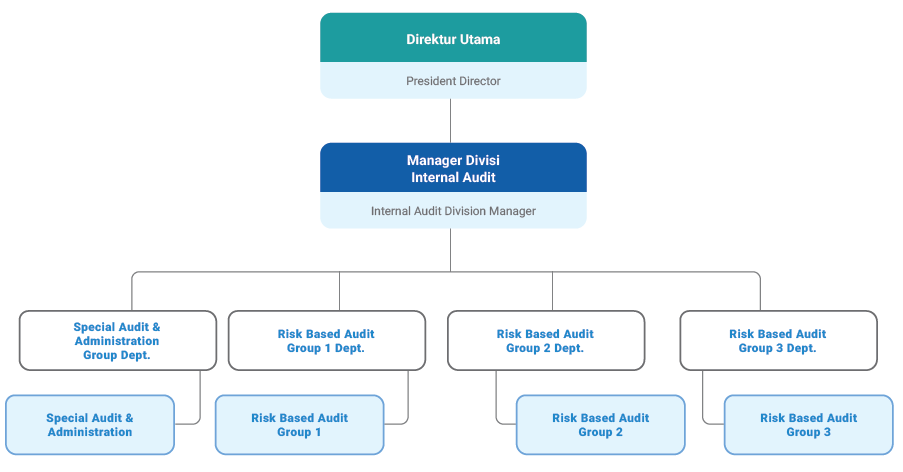
Profile of Internal Audit Head
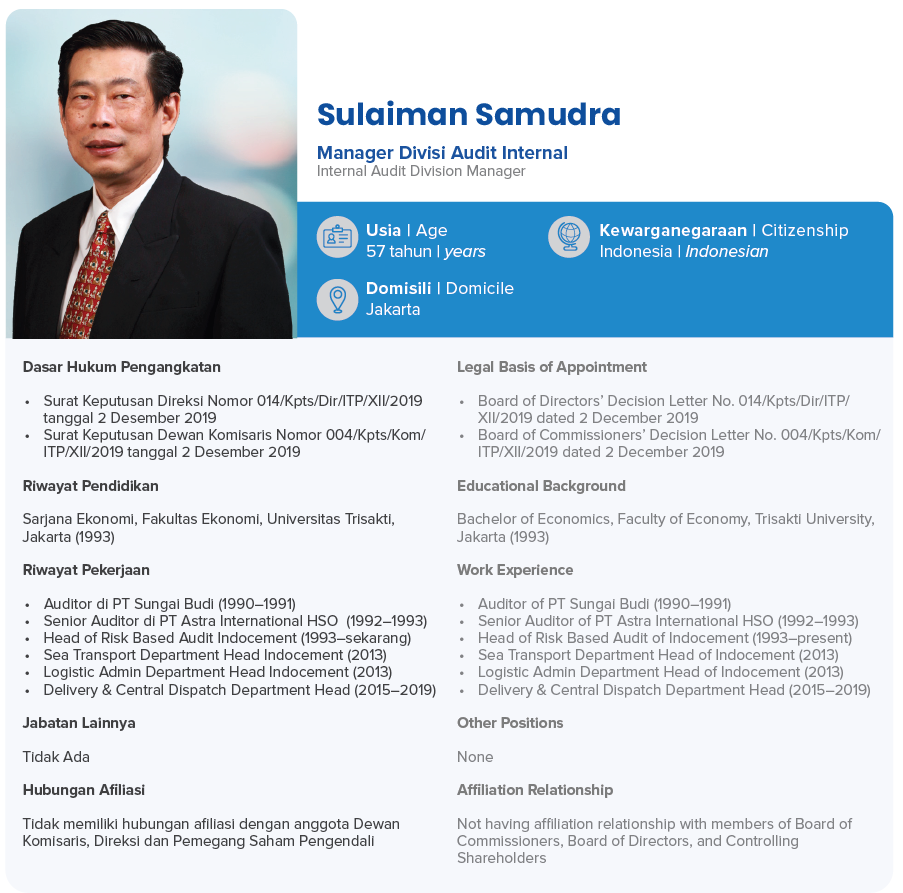
Auditor's Code of Ethics
Internal Audit Division's Duties and Responsibilities
Internal Audit Division evaluates the control process, risk, and system in the Company and its subsidiaries. This division also performs audit function on the Company’s operations. The Internal Audit Division effectively assists members of the management in performing their duties and responsibilities, such as:
Total Personel, Qualifications, and Certifications of Officers in Internal Audit Division
To strengthen the Risk-Based Audit on the Company’s technical operations, the qualifications of Internal Audit employees consist of Bachelor of Economics and Bachelor of Engineering. The qualifications held by the Internal Audit Division employees until the end of 2022 are presented in the followings.
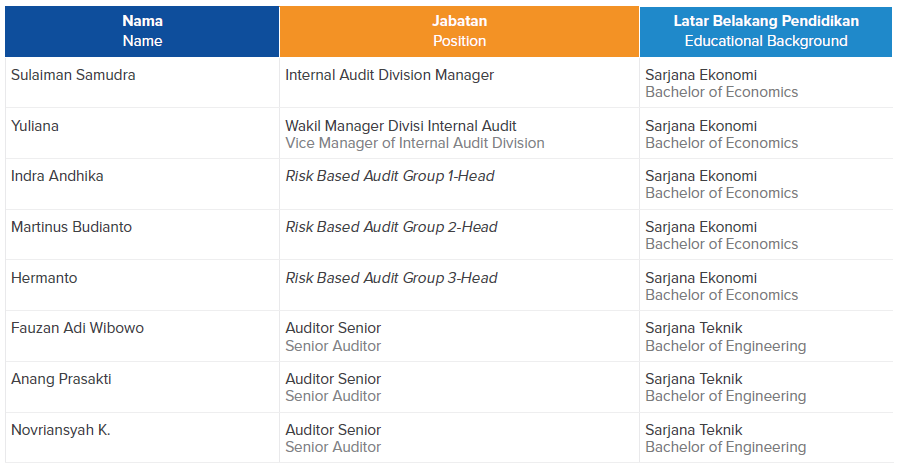
Audit Division's Work Program and Its Realization
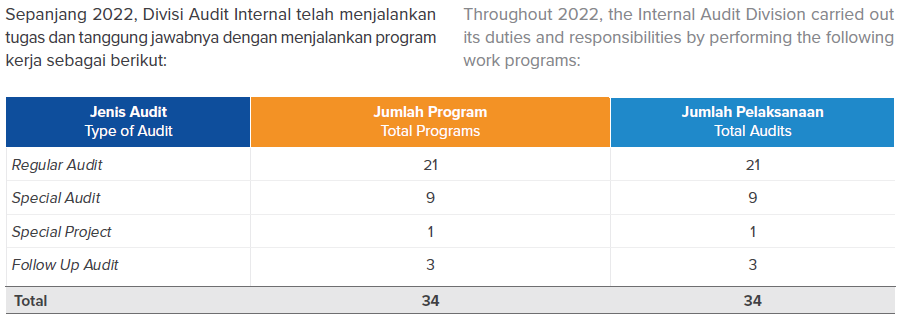
Findings and Follows Up
There were 134 internal audit findings with 151 action plans, and 49 action plans have been implemented.
Internal Audit Division's Competency Development Program
